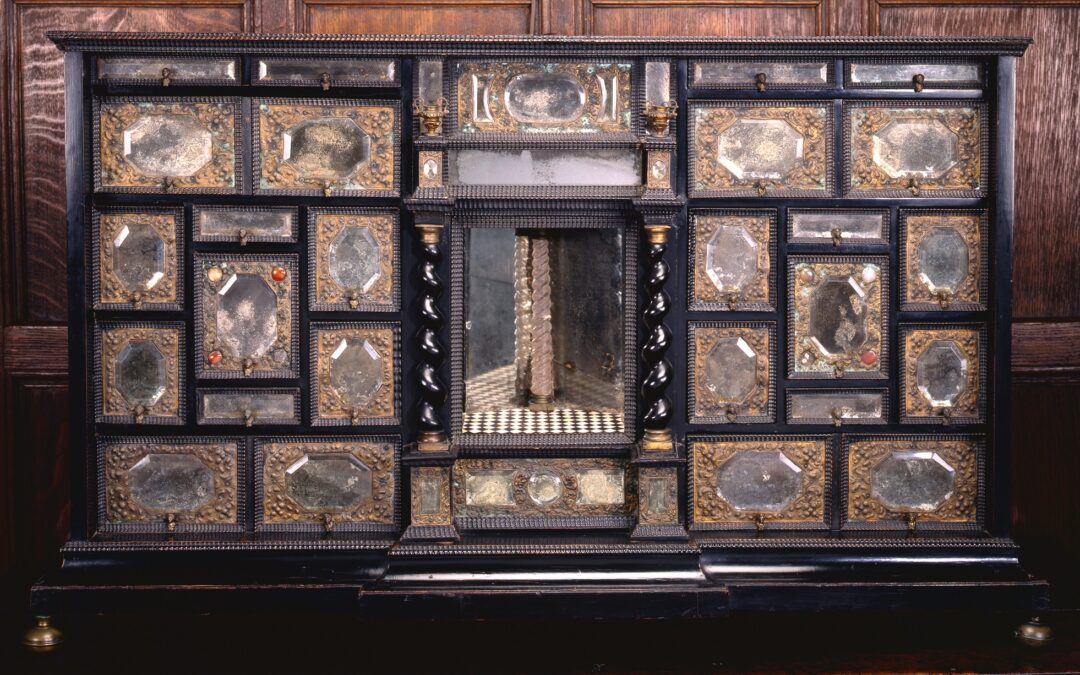
by NRF User | Jan 3, 2024
This intricately decorated chest was originally used to display special personal treasures, such as natural history specimens, gemstones, and small souvenirs from travels. Several years ago, Rough Point curatorial staff were delighted to discover a secret compartment hidden inside, intended for safely storing documents. Doris Duke purchased the chest in Paris in 1965.

by NRF User | Jan 3, 2024
The Wilke Manufacturing Company also made refrigerators around the turn of the twentieth century that were covered in porcelain tiles, just as on this freestanding cigar case. Unsurprisingly for a tobacco magnate, James Duke owned the deluxe two-door model and likely installed it at Rough Point in the early 1920s when the house was being renovated.

by NRF User | Jan 3, 2024
This chair was once thought to be a 19th century reproduction of a “Pilgrim”, or early American, style, chair. The paint color made it appear it was from the Victorian period (or mid-19th century) and there was very little wear to the arms of the chair, making it seem unlikely to be over three centuries old.
Conservation work has revealed many layers of history that date back to as early as 1680—and points to the craftspeople involved in its creation.
The seat of this chair is made out of woven cornhusks and may have been made by a local Native American weaver (likely from the Wampanoag or Narragansett tribes).
Today, the chair displays its many layers of history: from the craft of weaving the seat (likely woven by a Rhode Island Indigenous woman), the early (but not original) layer of blue paint the reflects the design taste of the early 1800s, to the ca. 1850 dark red and gold paint visible today.

by NRF User | Jan 3, 2024
This high chest is a spectacular example of Newport furniture and features the inscription of Benjamin Baker on the back of the piece
Benjamin Baker was active as a very prolific chair maker in Newport from 1760, and also made clock cases, tables and case furniture that was produced primarily for export to the coastal trade. This piece may originally have been designed for export: a recent conservation project revealed that the secondary wood is cedrela odorata—an unusual choice for Newport furniture.
Another special feature is the intaglio (incised) carved petal and leaf motif on the knees; a decorative detail found on Newport high chests and tea tables.

by NRF User | Jan 3, 2024
James and Nanaline purchased this suite of tapestry upholstered furniture from antique dealer Duveen Brothers and displayed the furniture in the Drawing Room of the New York City from 1 East 78th Street. On each of the seats and backs is a scene from the Fables collected by Jean de La Fontaine (1621-1695) in the late 17th century, including the familiar characters of the Fox and the Crane, the Lion and the Mouse, the Hawk and the Nightingale, the Dog and his Shadow, and the Bat, the Bush, and the Duck.





